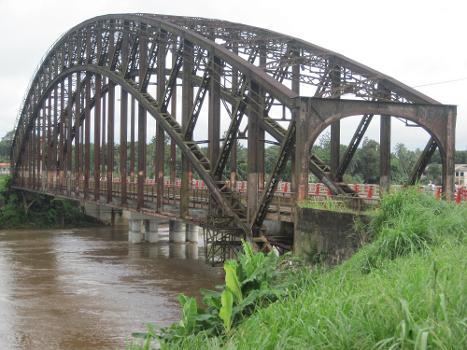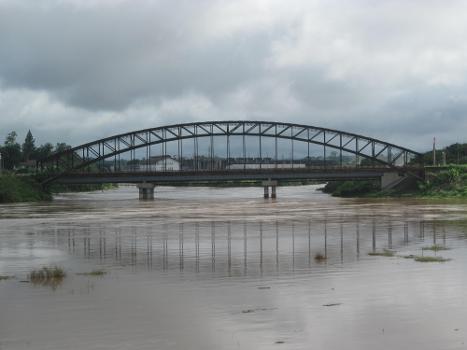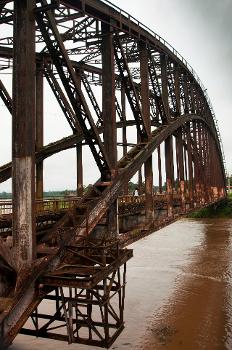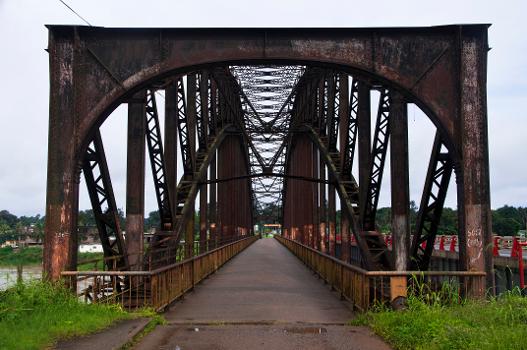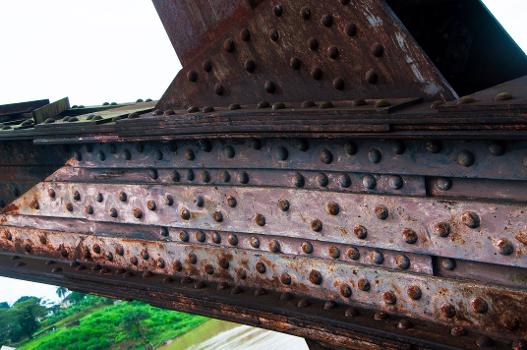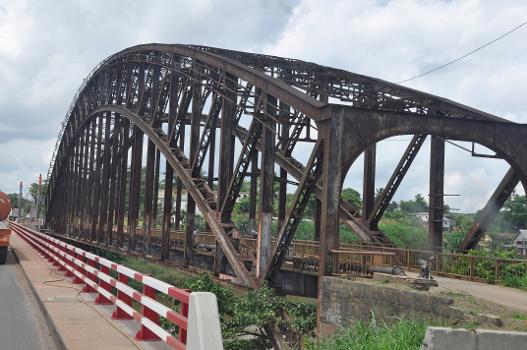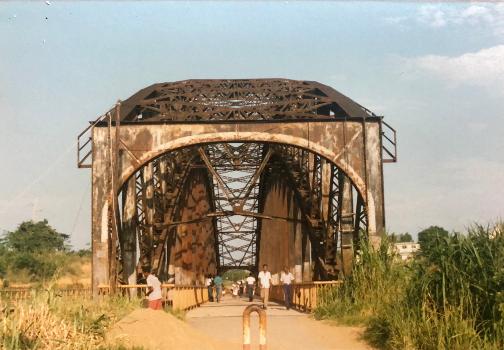General Information
| Other name(s): | Edea Bridge |
|---|---|
| Completion: | 1911 |
| Status: | out of service |
Project Type
| Structure: |
Through arch bridge Truss arch bridge |
|---|---|
| Material: |
Steel bridge |
| Plan view: |
Structurae Plus/Pro - Subscribe Now! |
| Support conditions: |
Structurae Plus/Pro - Subscribe Now! |
| Function / usage: |
original use: Railroad (railway) bridge current use: Bicycle and pedestrian bridge |
Location
Technical Information
Dimensions
| width | 8.5 m | |
| span | 159.6 m | |
| length | 160.7 m | |
| number of tracks | 1 |
Materials
| deck |
steel
|
|---|---|
| truss |
steel
|
Excerpt from Wikipedia
The Japoma Bridge (also known as the Edea German Bridge or the German Bridge) is a former railway bridge over the Sanaga River near Edea, Cameroon.
Note there is now another bridge across the Dibamba River called the Yapoma Bridge. It is sometimes called Japoma Bridge, which causes confusion, for example, in accounts of the fighting during WW1 - see the First Battle of Edea. Gorges (1920: 153) shows the other one.
History and technical details
The steel arch bridge was designed and built by the Gutehoffnungshütte of Oberhausen. Before being delivered, the bridge was assembled in Germany so it could be tested. It was then disassembled and transported in pieces to Cameroon by boat in 1911. It measures 160m in length, and was the largest in Africa at the time of erection. The vertical columns starting at the arch grille are used as a suspension for the roadway. One half of the arch was first assembled on the ground and the other half built on floating barges, which were then assembled. It remains as an architectural relic of the German colonial era in Cameroon.
The strategic location of the bridge was a factor during the First and Second Battles of Edea during World War I. On 2 August 1937, the bridge was also visited by the entire crew of the German ship Wahehe, with certain officers going right up to the bank of the river, in what was thought to be a reconnaissance of the area.
Until the early 1980s, the bridge was the only crossing point over the Sanaga Rivery for trains, vehicles and pedestrians. It is now used as a footpath and cycle track.
Text imported from Wikipedia article "Japoma Bridge" and modified on June 12, 2023 according to the CC-BY-SA 4.0 International license.
Participants
Relevant Web Sites
- About this
data sheet - Structure-ID
20086034 - Published on:
08/06/2023 - Last updated on:
04/03/2025

